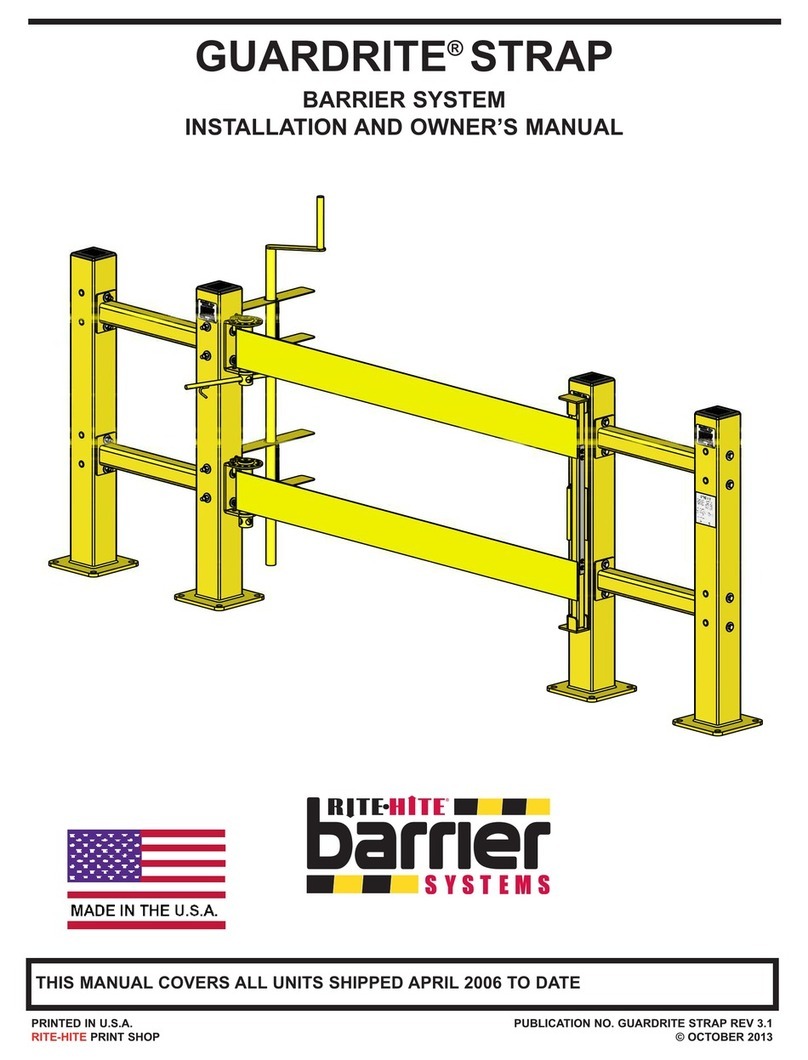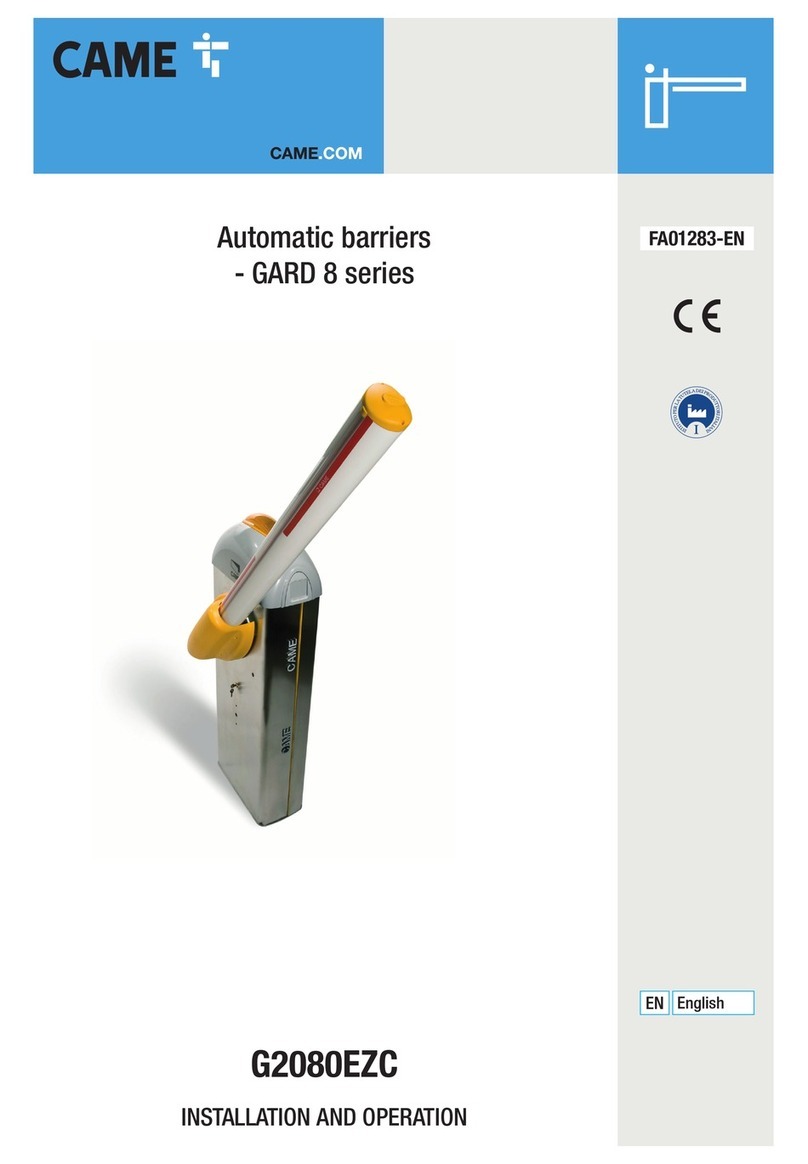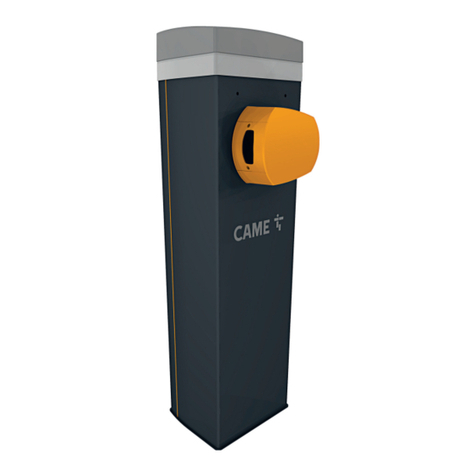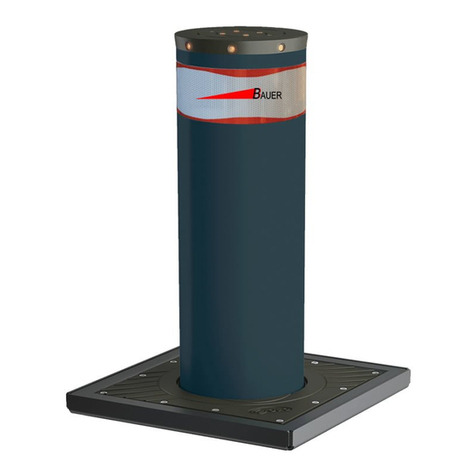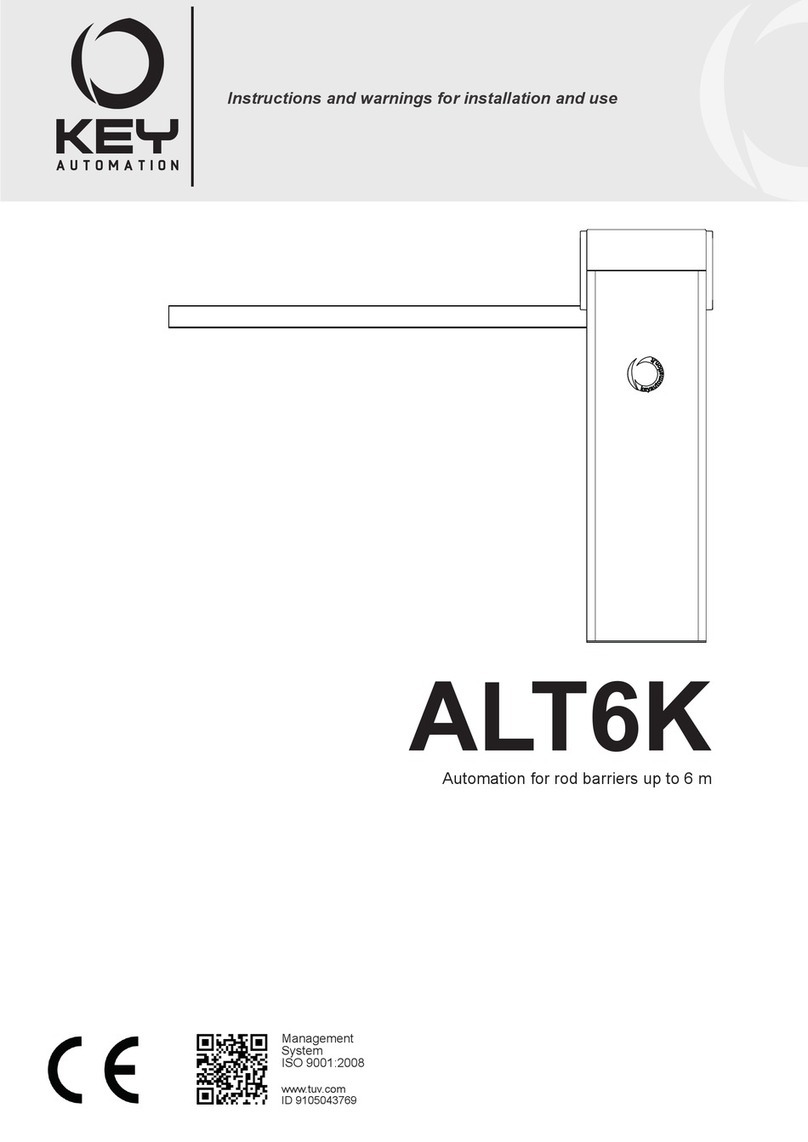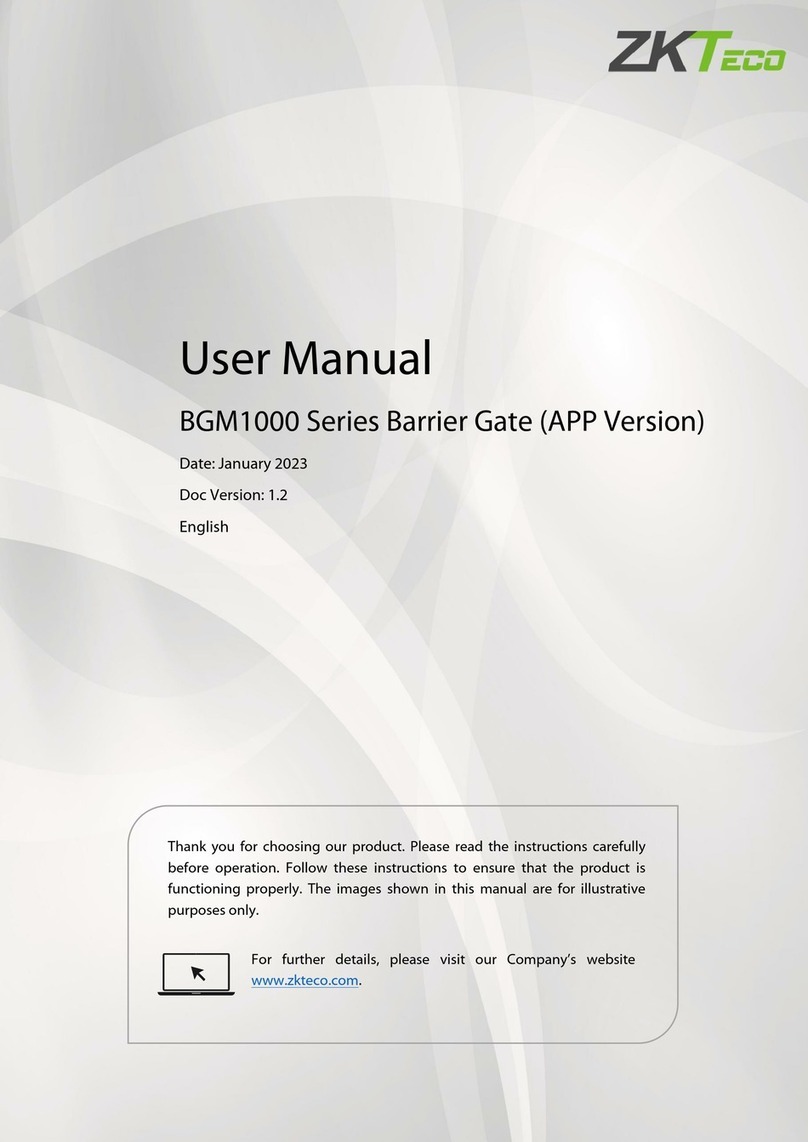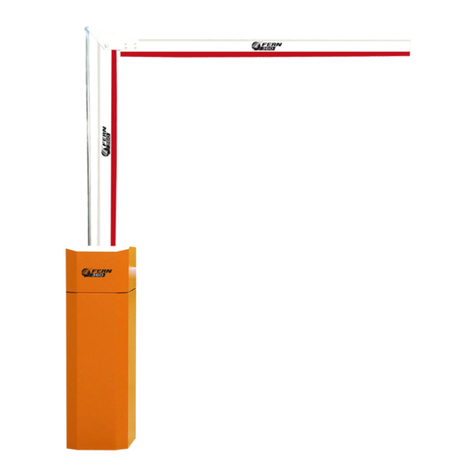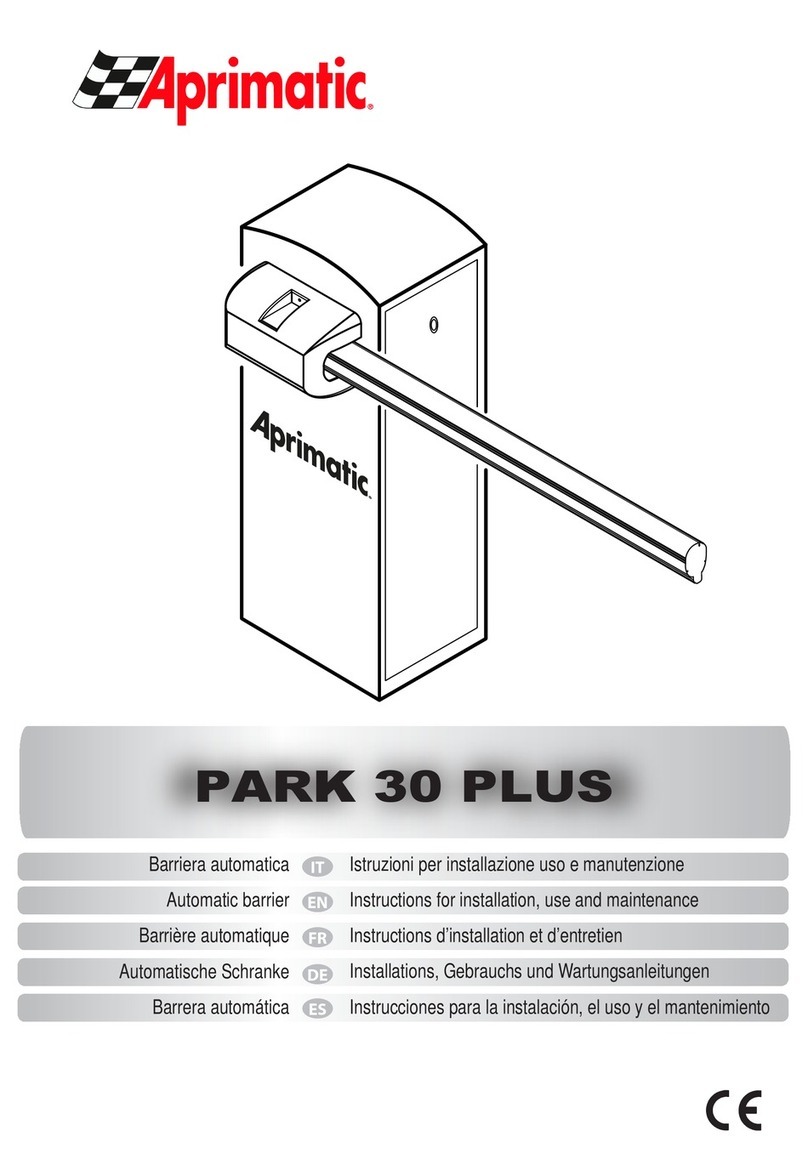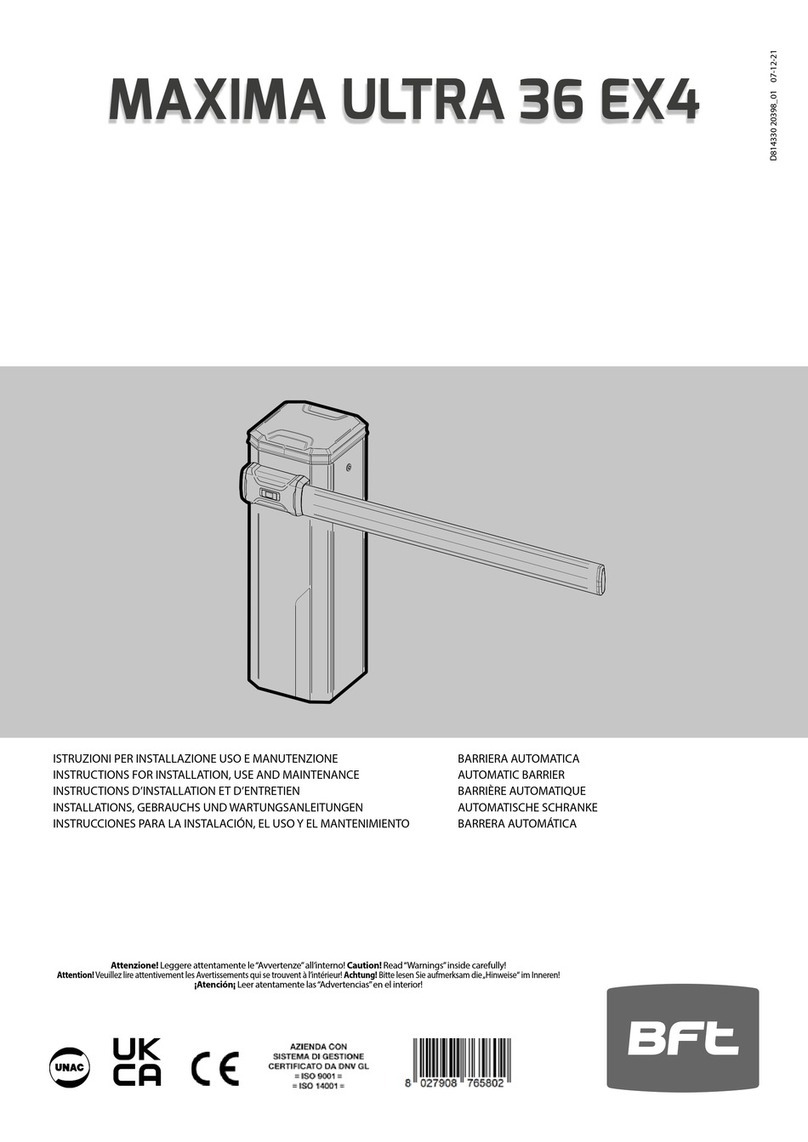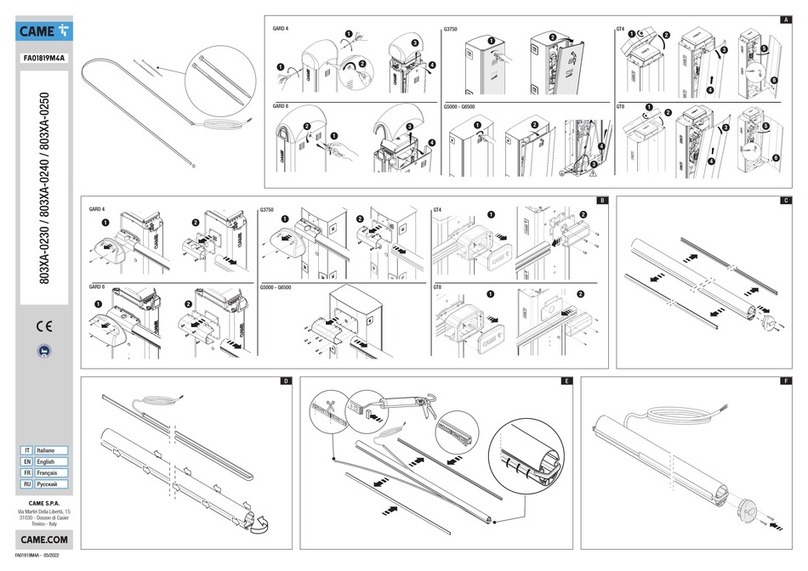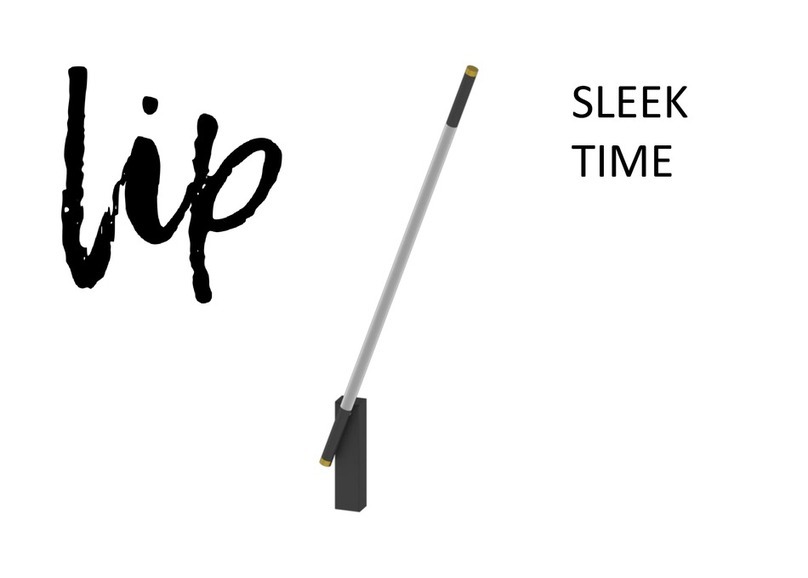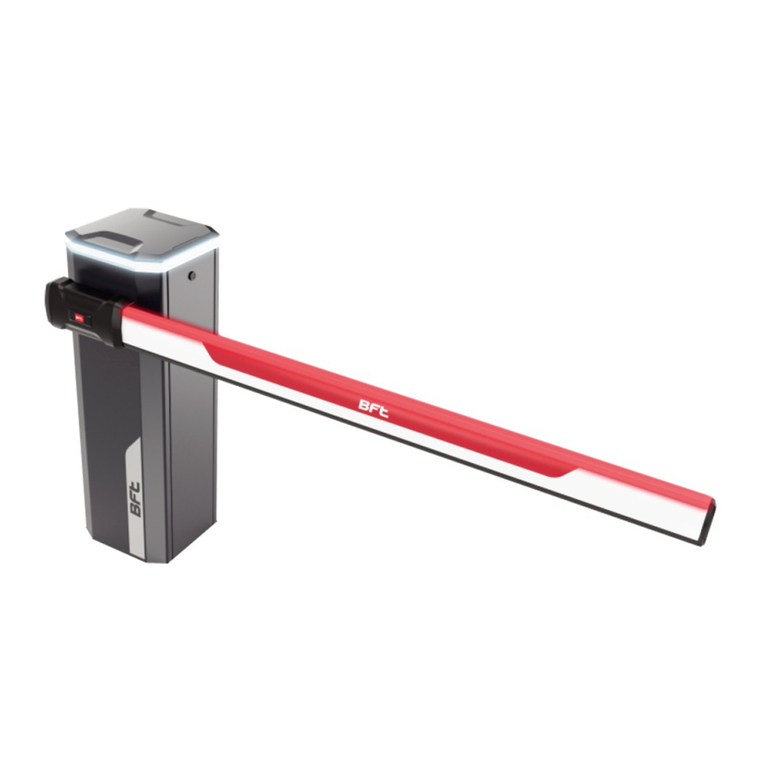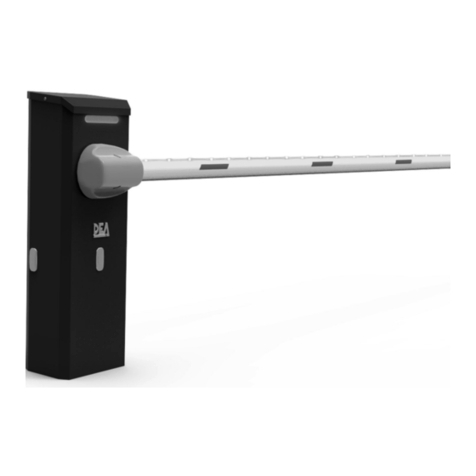
7
INSTALLATION
The MINERVA photocell system used in conjunction with a AU S3, AU S-TWIN or
AU S3M2 control unit represents a type 2 electro-sensitive safety protection system. As
provided for by international standards 61496-1 and prEN61496-2, in type 2 safety
devices, possible faults or malfunctioning must be detected during the testing stage.
In a type 2 safety device, the test is mandatory, as the output relays will not be energised
unless the test command has been imparted and the test has been completed
successfully. Before installing the MINERVA safety system make sure that:
!The hazard rating of the machine is compatible with the use of electro-sensitive safety
devices of type 2.
!The machine and the operating cycle are compatible with the operation of a type safety
device.
!The working cycle or hazardous movements can only be started by working on relative
controls. In particular the safety system must be used solely as an emergency stopping
device, not as a machine control.
!The test command is located outside the hazardous zone, at a poing affording a clear
vision of the operating area.
!The machine can be controlled electrically.
!Each and every dangerous movement of the machine can be stopped at once. In particular,
the machine stopping time must be known. If necessary, measure it yourself
!The machine does not give rise to dangerous situations due to the projection of falling of
materials from above; if it does, it becomes necessary to fit additional mechanical
protections.
Before positioning the device, it is important to take into account the following general
considerations:
•Make sure that the temperatures of the environment in which the system is installed
are compatible with the working temperature parameters listed in the technical data
tables (page 6).
•Do not install the emitter and the receiver in the proximity of strong or high-intensity
blinking light sources.
•Install the control unit in an environment with degree of protection of at least IP54.
Special environmental conditions may affect the detection capabilities of the photo-
electric devices. If the device is placed in an environment undergoing sudden
temperature variations, it is indispensable to take the necessary measures to prevent the
formation of condensate on the lenses, as this might undermine the detection capacity of
the equipment. If fog, rain, fumes or dust are present in the working environment, it is
advisable to ensure trouble-free system operation by applying suitable correction factors
(Fc) to the equipment’s maximum effective capacity. In these cases:
Pu = Pm x Fc
where Pu and Pm stand for effective and maximum capacity, in m, respectively.
